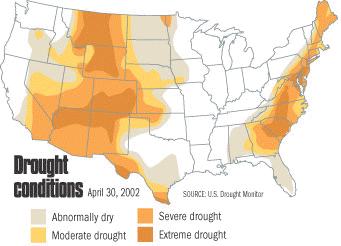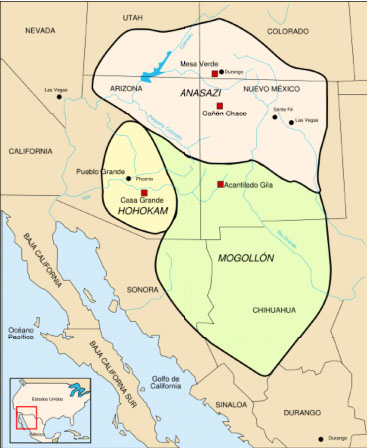Winter 2007, Volume 23.2
READING THE WEST
read-ing [from ME reden, to explain, hence to read] _ vt. 1 to get the meaning of; 2 to understand the nature, significance, or thinking of; 3 to interpret or understand; 4 to apply oneself to; study.
Global Supply and Demand
According to Maude Barlow, water concerns are global. Supply seems to be in decline as the demand rises:
We’d like to believe there’s an infinite supply of water on the planet. But the assumption is tragically false. Available freshwater amounts to less than one-half of 1 percent of all the water on earth. The rest is sea water, or is frozen in the polar ice. Fresh water is renewable only by rainfall, at the rate of 40,000 to 50,000 cubic kilometers per year. Due to intensive urbanization, deforestation, water diversion, and industrial farming, the earth’s surface is drying. If present trends persist, the water in all river basins on every continent could steadily be depleted.
Global consumption of water is doubling every 20 years, more than twice the rate of human population growth. According to the United Nations, more than one billion people on earth already lack access to fresh drinking water. If current trends persist, by 2025 the demand for freshwater is expected to rise to 56 percent above the amount that is currently available.
Source: Maude Barlow, "The Global Water Crisis and the Commodification of the World’s Water Supply,"International Forum on Globalization, Spring 2001, https://www.thirdworldtraveler.com/Water/Blue_Gold.html
Blue Gold
Water has emerged as the new "new" thing in investing. People gaze out at a growing global population, do the math on limited water resources and creeping pollution, and they see dollar signs. There’s even a new name for the stuff: blue gold. The rising value of water may be an even greater source of contention in the near future:
A fight over water is brewing between Utah and Nevada. Water officials in the Las Vegas Valley have applied for water rights in seven sparsely populated valleys, a region bigger than Connecticut, including the Snake Valley, which stretches into Utah and to Callao.
The Southern Nevada Water Authority hopes to eventually tap 65 billion gallons of rural water a year with a 300-mile-long pipeline expected to cost more than $2 billion. That’s enough water for 50,000 families a year.
Earlier this year, Nevada State Water Engineer Tracy Taylor ruled that the water authority could pump 40,000 acre-feet of water yearly from aquifers in Spring Valley, Nev. That area lies directly west of Snake Valley, which straddles the Utah-Nevada border.
After 10 years, state and federal authorities will determine whether the pumping has been harmful to the environment. If the impacts are not too great, the Nevada water authority could then pump an additional 20,000 acre-feet a year.
Sources: NPR https://www.npr.org/templates/story/story.php?storyId=10953190, Salt Lake Tribune: https://www.sltrib.com/ci_6062686, and KSL: https://www.ksl.com/?nid=238&sid=1352392
Colorado River—Lifeline of the Region
 The U.S. Census Bureau projects California’s population will rise to more than 46 million by 2030 from 36.5 million now, while Arizona and Nevada will nearly double to 10.7 million and 4.3 million people, respectively. Arizona already is the fastest-growing U.S. state, up nearly 70 percent from 1990 to about 6.2 million in 2006. Many of the fastest growing counties in the country–such as Washington Country, Utah–are in the arid West.
The U.S. Census Bureau projects California’s population will rise to more than 46 million by 2030 from 36.5 million now, while Arizona and Nevada will nearly double to 10.7 million and 4.3 million people, respectively. Arizona already is the fastest-growing U.S. state, up nearly 70 percent from 1990 to about 6.2 million in 2006. Many of the fastest growing counties in the country–such as Washington Country, Utah–are in the arid West.
The projected growth will put further pressure—from cities and agriculture—on the Colorado River, the region’s lifeline. The river is reduced to a trickle when it reaches the Gulf of California in Mexico.
During the current long drought, the Colorado River has seen below-normal snow runoff for five consecutive years. It’s snow in the mountains more than rain that matters here.
The seven states along the river—Colorado, New Mexico, Utah, Wyoming, Arizona, California and Nevada—reached a new deal in April on sharing water during the drought. The deal is awaiting approval from the U.S. Department of the Interior.
Source: U.S. Census Bureau: https://www.census.gov/popest/counties/CO-EST2004-09.html and Colorado River Water Users Association: https://www.crwua.org/states.html
Dry, Dry, Dryer
 If some of the current models are correct, the levels of aridity of the recent multi-year drought, or the Dust Bowl and 1950s droughts, may, within the coming years to decades, become the new climatology of the American Southwest:
If some of the current models are correct, the levels of aridity of the recent multi-year drought, or the Dust Bowl and 1950s droughts, may, within the coming years to decades, become the new climatology of the American Southwest:
A team of researchers at the Lamont-Doherty Earth Observatory (Columbia University, New York, USA) has used 19 computer models to forecast that the Southwestern United States may well be completely dry by the middle of this century. A combination of human-induced climate change and water demand increase due to population growth will soon transform this region into a desert if nothing is done.
This permanent drought is also likely to hit other sub-tropical regions of the globe, such as southern Europe, North Africa, and the Middle East, as well as some parts of South America.
Source: The study was published in April, 2007, in the journal Science; the map was made available by MEGATechNews: https://www.megatechnews.com/american-southwest-heading-for-a-permanent-drought/. The sturdy was also announced in National Geographic News: https://news.nationalgeographic.com/news/2007/04/070405-us-drought.html, and Live Science: https://www.livescience.com/environment/070405_southwest_drought.html
Least Chubb Warning
The lowly least chubb might know something about water tables:
Least chub were once widely distributed in the rivers, streams, marshes and springs over much of Utah west of the Wasatch Front, where they lived on small invertebrates like mosquito larvae. Today they are found naturally in just six complexes of springs and ponds, and are threatened by a combination of nonnative fish such as mosquito fish, livestock grazing, suburban sprawl, and—of greatest concern—proposed groundwater pumping by the Southern Nevada Water Authority.
The Center for Biological Diversity, Confederated Tribes of the Goshute Reservation, Great Basin Chapter of Trout Unlimited, and Utah Chapter of the Sierra Club have filed a petition to protect the least chub, a rare fish species found only in Utah, as a threatened or endangered species under the federal Endangered Species Act. Noah Greenwald, conservation biologist with the Center for Biological Diversity explains:
"The least chub is on the verge of extinction. This small, minnow-like fish is an important part of the web of life in Utah. It’s found nowhere else in the world, and it badly needs the effective protection of the Endangered Species Act to survive."
…Decline of the least chub is an indicator of declining water tables that will also harm farmers, ranchers and dozens of other species that depend on desert streams and springs of the Snake Valley, including the Bonneville cutthroat trout—state fish of Utah.
Source: Center for Biological Diversity: https://www.biologicaldiversity.org/swcbd/press/least-chub-06-20-2007.html
Hohokam Warning
As one of the fastest growing cities in the West, Phoenix, Arizona, continues to grow, archeologists are uncovering a vast network of canals by which the Hohokam sustained a large population which dispersed in the mid 1300s. According to Craig Childs, they disappeared when the water did.
With a population that grows—and, in turn, grows thirstier—every day, will Phoenix go the way of the Hohokams?… The Hohokams lasted 1,500 years. Phoenix did not get its true, populous foothold until after the 1960s, when air-conditioning became widely available. We have about 1,450 years to go….
Charlie Ester doesn’t see the water supply, or Western civilization for that matter, lasting nearly so long. Ester is a hydrologist working for the Salt River Project, one of two suppliers of water to the city….
From Ester’s vantage, the current supply looks both good and bad. There is plenty of water for Phoenix now, but how long will it last?
Ester laid out the Phoenix situation,… and it sounded similar to the environmental shift that heralded the end of the Hohokams:
"Up until the 1990s, the worst drought we’d seen lasted seven years. So, we happily went along planning for seven-year droughts. We have storage-planning diagrams based solely on seven years," he said. "The current drought began in 1995, so 2002 was year Number 7, and we were thinking it was going to end soon. Then, 2003 was dry, 2004 was dry. We got to 2006, and it was as dry as 2002. This could last 20, 30 more years. It’s been a real eye-opener for us at SRP.
"We may not have as robust a water supply as we thought we did."
No need to run for the nearest exit, Phoenix. Ester is merely thinking in an archaeological time frame. Looking at it optimistically, he sees another few hundred years of water and prosperity. Looking at it the other way, well, he wouldn’t want to project his opinion.
"The tendency is to think we’ve got it right this time, that it’s never going to happen to us," Ester said. "But you know it is going to happen. It has to. History will repeat itself."

Source: Craig Childs, "For Phoenix, as for Hohokams, rise is just like the fall," High Country News, 27 May 27, 2007; https://www.azcentral.com/arizonarepublic/viewpoints/articles/0527hohokam0527.html
